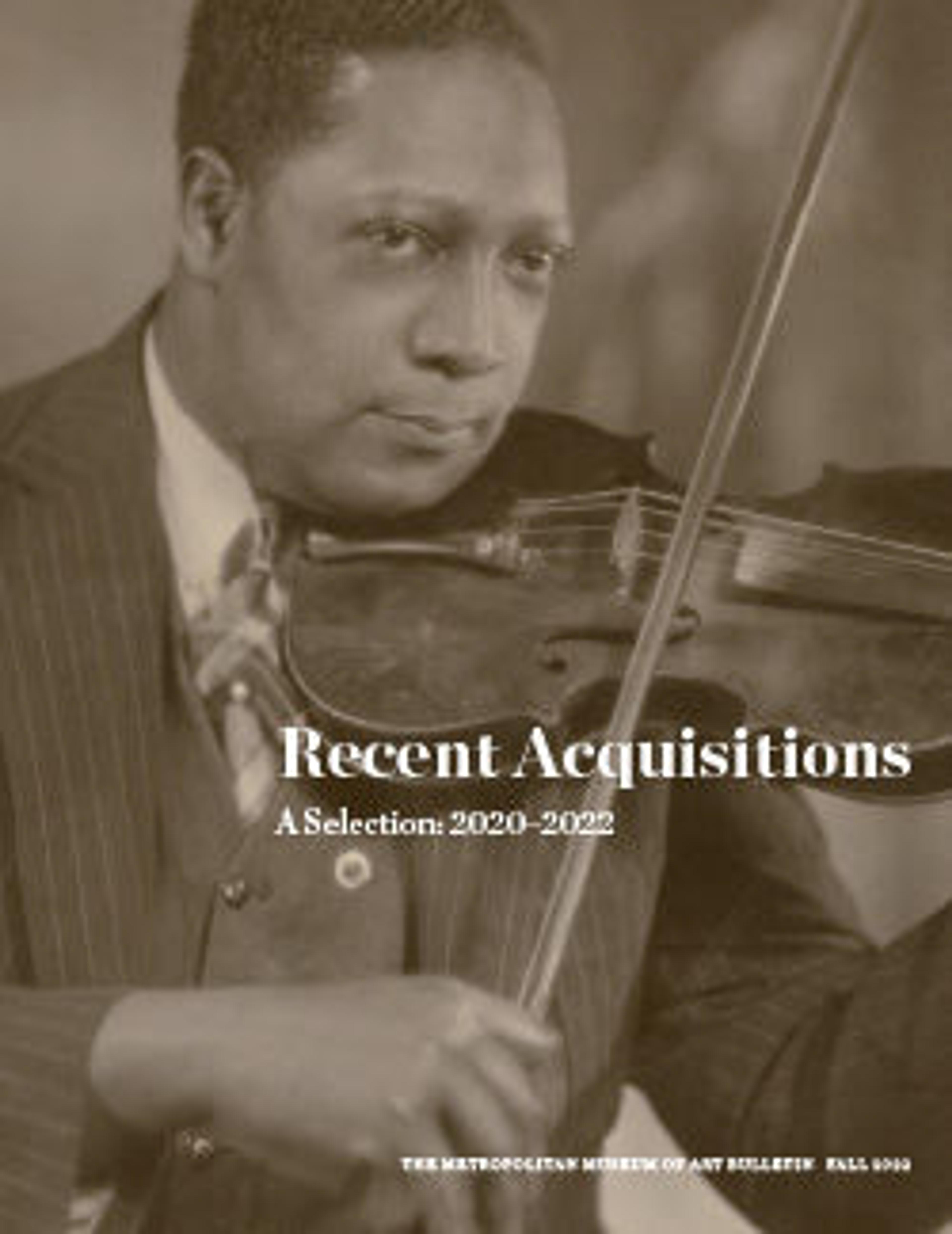Powder Horn of John Mahard
This is a rare horn from the French and Indian War, embellished by John Bush, one of the first major engravers of the Lake George School and the only Black American known to have decorated horns.
Bush engraved this example while he served in the Massachusetts provincial militia at Fort William Henry on Lake George. Popularized by The Last of the Mohicans, James Fenimore Copper's novel (1826), the fort's siege and its capitulation to the French and their Indigenous allies in 1757 form a particularly grim episode of the War. Although Bush escaped the fate of other occupants of the fort, who were massacred contrary to the terms of the capitulation, he died a prisoner of war shortly thereafter, while he was in French custody. Completed a year prior to the fort's fall, this is the only surviving horn that he is known to have decorated for a fellow militiaman in his company.
In eighteenth-century Colonial America it was common practice to carry gunpowder for one’s personal use in powder horns, receptacles actually made from the keratin sheaths of cattle horns. These sheaths were not only hollow and naturally water proof, their twisted shapes also ensured that they would fit snugly when carried against one’s body. What is more, their conical structure provided a narrow point through which the gunpowder could be conveniently poured down the barrel of a musket or longrifle. The exterior surface of such powder horns could be left blank or decorated.
This horn is important for its ornamentation, which is both original and graceful in execution, and for its historical significance as well. The ornamental motifs and the lettering are characteristic of the horns decorated by John Bush. These works all date to the beginning of the French and Indian War (1754–63), a conflict that opposed the British and the French and their respective Indigenous allies in North America. Bush was then serving in the Massachusetts provincial militia to help the British, and stationed at Fort William Henry, a strategic stronghold on Lake George.
Bush engraved this example while he served in the Massachusetts provincial militia at Fort William Henry on Lake George. Popularized by The Last of the Mohicans, James Fenimore Copper's novel (1826), the fort's siege and its capitulation to the French and their Indigenous allies in 1757 form a particularly grim episode of the War. Although Bush escaped the fate of other occupants of the fort, who were massacred contrary to the terms of the capitulation, he died a prisoner of war shortly thereafter, while he was in French custody. Completed a year prior to the fort's fall, this is the only surviving horn that he is known to have decorated for a fellow militiaman in his company.
In eighteenth-century Colonial America it was common practice to carry gunpowder for one’s personal use in powder horns, receptacles actually made from the keratin sheaths of cattle horns. These sheaths were not only hollow and naturally water proof, their twisted shapes also ensured that they would fit snugly when carried against one’s body. What is more, their conical structure provided a narrow point through which the gunpowder could be conveniently poured down the barrel of a musket or longrifle. The exterior surface of such powder horns could be left blank or decorated.
This horn is important for its ornamentation, which is both original and graceful in execution, and for its historical significance as well. The ornamental motifs and the lettering are characteristic of the horns decorated by John Bush. These works all date to the beginning of the French and Indian War (1754–63), a conflict that opposed the British and the French and their respective Indigenous allies in North America. Bush was then serving in the Massachusetts provincial militia to help the British, and stationed at Fort William Henry, a strategic stronghold on Lake George.
Artwork Details
- Title:Powder Horn of John Mahard
- Artist:John Bush (Colonial American, Massachusetts ca. 1725–ca. 1758)
- Date:Dated 1756
- Culture:Colonial American
- Medium:Cowhorn, wood, iron
- Dimensions:L. 12 3/8 in. (31.5 cm); greatest Diam. 2 3/4 in. (6.8 cm); Wt. 7 5/8 oz. (216 g)
- Classification:Firearms Accessories-Powder Horns
- Credit Line:Purchase, Friends of Arms and Armor Gifts, 2021
- Object Number:2021.429
- Curatorial Department: Arms and Armor
More Artwork
Research Resources
The Met provides unparalleled resources for research and welcomes an international community of students and scholars. The Met's Open Access API is where creators and researchers can connect to the The Met collection. Open Access data and public domain images are available for unrestricted commercial and noncommercial use without permission or fee.
To request images under copyright and other restrictions, please use this Image Request form.
Feedback
We continue to research and examine historical and cultural context for objects in The Met collection. If you have comments or questions about this object record, please contact us using the form below. The Museum looks forward to receiving your comments.
